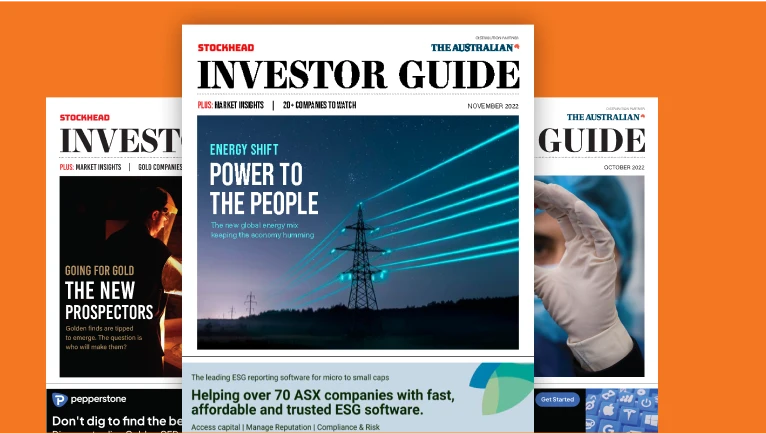Rare earth plays charting new route to the future

The rare earth sector is forging a new path, breaking away from China’s grip. Pic: Getty Images
- For years, China has wielded rare earths like a sword, threatening export bans, restricting supply and controlling pricing
- Lynas has proven there are alternative pathways following the production of dysprosium at its Malaysia plant
- Here are some other heavy rare earth ASX players shaking things up
China’s decades-long dominance in rare earth production isn’t by chance.
It’s the culmination of smart investments over many decades and a high tolerance for environmental trade-offs, while other nations have grappled with tighter regulations and higher costs.
Its control over nearly 90% of global rare earth refining and close to 70% of total output, has seen China become the indispensable supplier, leaving other countries vulnerable to price shocks and geopolitical supply disruptions.
The Middle Kingdom has used the resource as a bargaining chip in international relations by flexing its economic muscles and threatening export bans, like its decision earlier this year to suspend all exports of seven kinds of rare earth metals.
These included dysprosium, gadolinium, lutetium, samarium, scandium, terbium and yttrium, all vital inputs to almost everything technological like smart phones, electric vehicles, missiles and wind turbines.
But all of that could soon change.
Last month, $8.21b miner Lynas (ASX:LYC), became the first to break China’s grip on heavy rare earths, producing dysprosium at its Malaysia plant and rewriting the global supply map.
It makes Lynas’s new production line the world’s only commercial producer of separated heavy rare earth products outside of China.
North Stanmore draws US government interest
Dysprosium stands out among other heavy rare earth metals primarily due to its unique magnetic properties, high melting point and ability to absorb neutrons, making it crucial in high-tech applications through its use in permanent magnets and nuclear reactors.
It is often added to neodymium-iron-boron magnetics to improve their performance at high temperatures, making them more efficient and durable.
Its ability to absorb neutrons makes it ideal for use in nuclear reactors, particularly in control rods where it helps regulate the fission reaction.
While Australia’s rare earth production numbers pale in comparison to that of China, accounting for only 3.33% of global production in 2024, ASX explorers and developers such as Victory Metals (ASX:VTM) are emerging as competitive players in the rare earth space.
Some projects even contain un-paralleled ratios of magnet rare earth elements such as VTM’s North Stanmore clay-hosted heavy rare earth project in WA, which holds a 247.5 million DMT resource at 520ppm total rare earth oxide and 4788t of gallium oxide.
North Stanmore’s basket of critical metals has grown to include by-product gallium, key heavy rare earths such as gadolinium, terbium, dysprosium, lutetium,and yttrium, in addition to the light rare earth samarium and by-product scandium.
The project has attracted international government-backed support following a letter of interest from the Export-Import Bank of the US in April for up to US$190m in project financing.
Further funds ($4m) were raised in May with strong backing from VTM’s top 20 shareholders to accelerate a PFS after a scoping study in March delivered an impressive case for the project with an NPV exceeding $1212m and IRR of 52%.
‘Running our own race’
In response to Lynas achieving first production of dysprosium oxide outside China, VTM CEO Brendan Clark said it was a game changer for ASX listed rare earth companies, particularly those with exposure to heavy rare earth elements.
“It proves that it’s technically and commercially viable to extract and process heavy rare earths outside China, which is a big deal and exciting milestone for Lynas,” he said.
“It is Victory Metals’ vision to separate high-value critical minerals like dysprosium and terbium from our mixed rare earth carbonate right here in Western Australia.
“We’ve already achieved the highest confirmed production of heavy rare earth Mixed Rare Earth Carbonate (MREC) from any clay hosted project in the country,” Clark said.
“Our unmatched metallurgical recoveries are a direct result of our unique geological setting underpinned by a deeply weathered, rare earth and critical mineral enriched alkaline intrusion that has been transformed over millions of years through multiple intense weathering cycles.”
Test work carried out on North Stanmore last year demonstrated outstanding recoveries of 93% for high value magnet rare earths, alongside high recoveries of scandium (50%).
More recently, VTM produced gallium in its final mixed rare earth carbonate (MREC) product at 358 g/t gallium oxide, positioning North Stanmore at the forefront of Australian gallium exploration.
“We’re running our own race, rare earth companies tend to keep their IP and processing methods tightly held,” he said.
“That said, given the strategic and commercial value of specific heavy rare earths like dysprosium and terbium, we do see an opportunity to downstream further in the future and we’re currently exploring those options with strategic partners who bring the technical capability.”
Some other ASX heavy rare earth players
RareX (ASX:REE) owns the Cummins Range project in WA, where high-grade gallium containing values up to 6826g/t has been identified, and is pitching for one of the world’s top undeveloped rare earth sites in Kenya.
Last month, REE announced a consortium with Iluka Resources (ASX:ILU) to secure and develop the Mrima Hill project in Kenya as the first step in the building of a non-Chinese rare earths supply chain.
Mrima Hill ranks as one of the top five undeveloped rare earth deposits in the world, while Iluka’s under-construction rare earths processing facility at Eneabba in WA, could process RareX’s ore from Mrima Hill in a very efficient way.
REE and ILU proposed a joint venture with the National Mining Corporation of Kenya (NAMICO), and have seen a positive response from Kenya’s High Commissioner to Australia Dr Wilson Kogo.
Aldoro Resources (ASX:ARN) owns the Kameelburg REE niobium project, 300km north of Windhoek in Namibia.
In May, the company reported the highest grades to date at the site, which confirmed a significant southwest extension and effectively doubling the footprint of the polymetallic discovery.
Significant new intercepts include 293m at 3.67% total rare earth oxide (TREO) equivalent from 3m, comprising 2.1% TREO, 0.21% niobium pentoxide and 448ppm molybdenum.
Over in Brazil, Brazilian Critical Minerals (ASX:BCM) Ema project hosts one of the largest clay rare earth deposits globally, with a mineral resource of 943Mt at 716ppm TREO, including a 341Mt starter zone with high-value magnet REE content.
The project is one of the few fully in-situ recovery rare earth projects outside of South East Asia.
ISR involves dissolving mineral deposits while still underground using chemical solutions, that are then pumped to surface to be processed into mineral products.
This method of mining tends to be kinder on the local environment while also offering lower costs.
A recent, heavily subscribed $4m placement has allowed BCM to accelerate a BFS, complete pilot field trials for in-situ recovery (ISR), progress environmental permitting and strengthen its working capital position to support pre-development activities.
VHM’s (ASX:VHM) Goschen project in Victoria has an ore reserve of 210 million tonnes within a massive resource of 892Mt at 3% total heavy minerals and is also rich in rare earths.
This is more than enough to fuel an initial 1.5Mtpa operation using a modular plant that has estimated pre-production capital costs of $160m.
Stage 1 will produce some 4300 tonnes per annum of rare earth mineral concentrate and 69,000tpa of zircon/titania heavy mineral concentrate at operating costs of $77 million per year.
It is expected to fund the stage two expansion to 5Mtpa, which will cost an additional $85-90m and take production up to 9000tpa of rare earths and 134,000tpa of HMC for at least 19 years.
At Stockhead, we tell it like it is. While Victory Metals, RareX, Aldoro Resources, Brazilian Critical Minerals and VHM are Stockhead advertisers, they did not sponsor this article.
Related Topics

UNLOCK INSIGHTS
Discover the untold stories of emerging ASX stocks.
Daily news and expert analysis, it's free to subscribe.
By proceeding, you confirm you understand that we handle personal information in accordance with our Privacy Policy.








